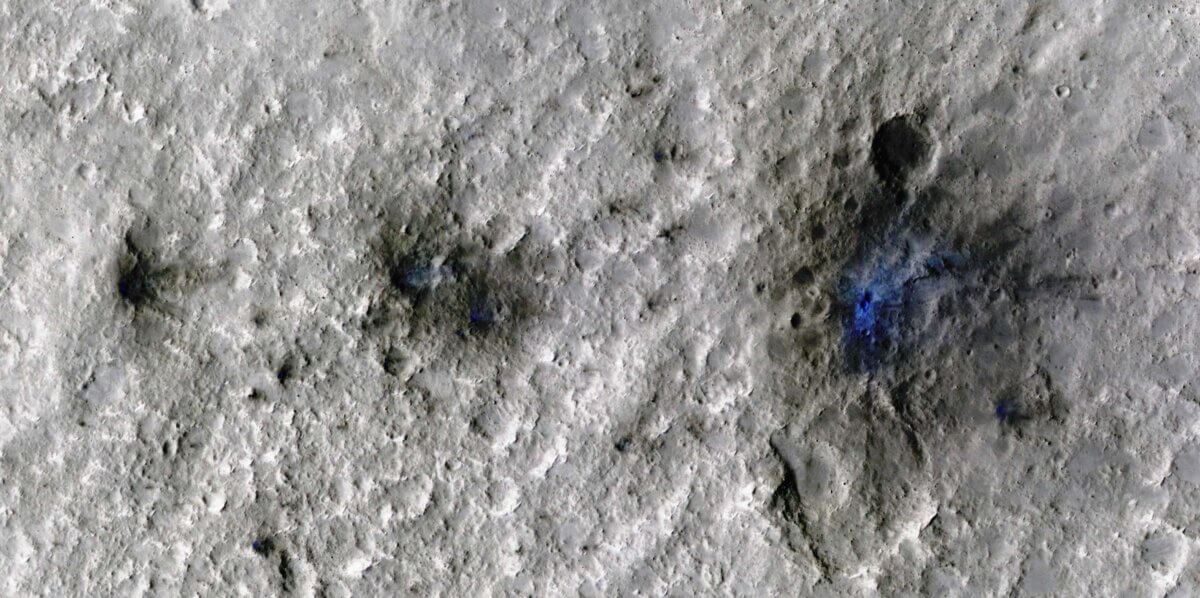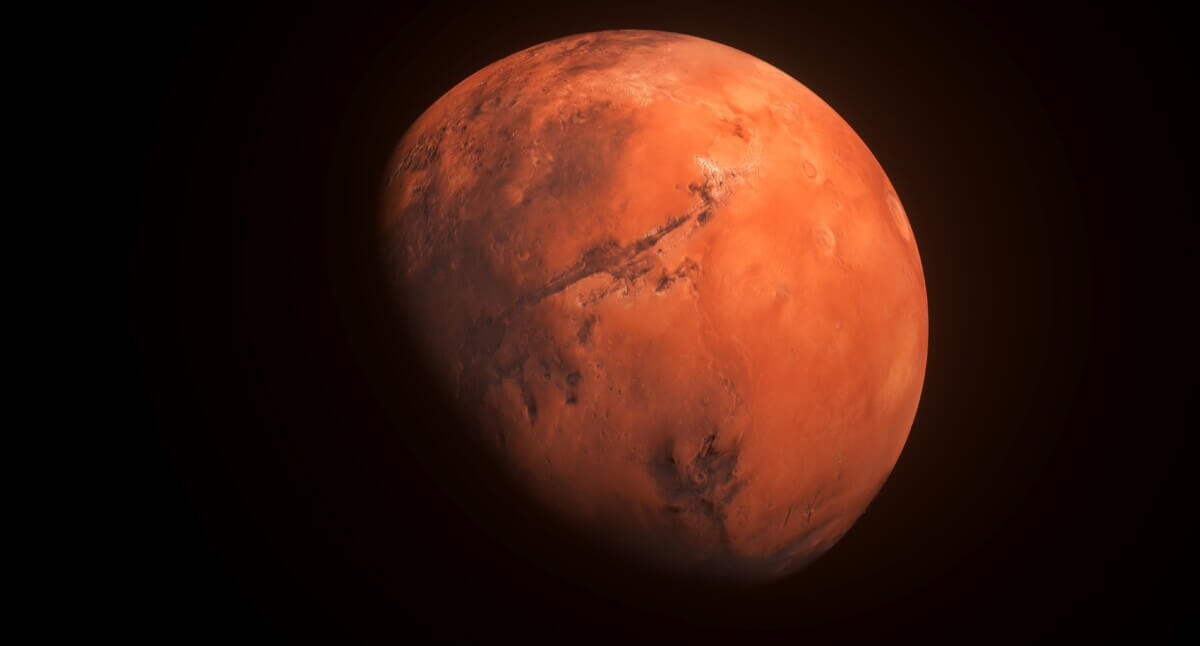
First meteoroid impact detected by NASA’s InSight mission; the image was taken by NASA’s Mars Reconnaissance Orbiter using its High-Resolution Imaging Science Experiment (HiRISE) camera. (Image credit: NASA/JPL-Caltech/University of Arizona)
ZÜRICH, Switzerland — Scientists have made a groundbreaking discovery on Mars. It turns out that there’s a lot more happening both on the ground and in the skies above the Red Planet than astronomers have ever thought. A new study reveals that Mars is regularly bombarded by meteorites and that activity is causing a unique form of seismic “marsquakes” following their impacts.
The new study published in Nature Astronomy suggests that hundreds of new impact craters larger than eight meters in diameter (over 26 feet) are formed on Mars each year. That’s up to three to four times more than previous estimates. This finding not only reshapes our understanding of Mars’ current geological activity but also has implications for future Mars exploration and our knowledge of the Solar System’s history.
“This rate was about five times higher than the number estimated from orbital imagery alone. Aligned with orbital imagery, our findings demonstrate that seismology is an excellent tool for measuring impact rates,” says study lead author Géraldine Zenhäusern from ETH Zurich in a media release.
The study, led by researchers from ETH Zurich and Imperial College London, used an innovative approach to count Martian impacts. Instead of relying solely on satellite imagery to spot new craters, they turned to seismic data from NASA’s InSight lander, which has been listening to Mars’ heartbeat since 2018. This new method allowed them to detect impacts that might be missed by orbiting cameras, especially in dusty or rocky areas where small craters are hard to spot.

Methodology: Listening to Mars’ Quakes
The key to this discovery lies in a unique type of marsquake detected by InSight’s sensitive seismometer. These quakes, classified as “very-high-frequency” or VF events, have distinct characteristics that set them apart from other Martian seismic activities. The researchers noticed that all confirmed meteorite impacts detected by InSight belonged to this VF category.
Here’s how the scientists pieced it together:
- They analyzed the seismic signatures of known impacts and compared them to other VF events.
- The team found that VF events shared similar characteristics with confirmed impacts, including their frequency content and distribution across Mars’ surface.
- Using mathematical models, they established a relationship between the seismic energy of these events and the size of the craters they would create.
- By assuming all VF events were impacts, they could estimate how many craters of different sizes were forming across Mars.
This approach allowed them to “hear” impacts that couldn’t be seen, providing a more complete picture of Mars’ impact rate.
The Results: A Surprising Number of Impacts
The study’s findings are striking:
- Approximately 280-360 new craters larger than 8 meters in diameter form on Mars each year.
- This rate is 3-4 times higher than previous estimates based on satellite imagery alone.
- The impact rate doesn’t show the expected “roll-off” for smaller craters, suggesting that even tiny meteorites are reaching Mars’ surface more often than thought.
Importantly, the seismic data allowed the researchers to detect impacts across all of Mars’ surface types, not just in areas where new craters are easy to spot visually. This provides a more accurate global picture of Mars’ impact rate.
The team also found that the size distribution of these impacts follows a pattern consistent with what we’d expect from asteroid impacts, further supporting their conclusion that the VF events are indeed caused by meteorites striking Mars.
Discussion & Takeaways
This higher impact rate on Mars has several important implications. Researchers note that the true frequency of meteorite impacts poses a greater risk to future Mars missions involving both robots and human astronauts. Mission planners will need to take this into account when designing spacecraft and habitats.
More frequent impacts also mean that Mars’ surface is being reworked more rapidly than previously thought. This could affect how we interpret the age of Martian surfaces and their geological features. Additionally, the study demonstrates that seismology can be a powerful tool for studying meteorite impact rates on other planets, complementing traditional methods like crater counting from orbit.
The researchers suggest that future Mars missions could benefit from including small, rugged seismometers to continue monitoring the planet’s impact activity. They also note that this technique could potentially be applied to other rocky bodies in the Solar System, opening up new avenues for planetary exploration.
“This is the first paper of its kind to determine how often meteorites impact the surface of Mars from seismological data – which was a level one mission goal of the Mars InSight Mission,” concludes Domenico Giardini, Professor of Seismology and Geodynamics at ETH Zurich and co-Principal Investigator for the NASA Mars InSight Mission. “Such data factors into the planning for future missions to Mars.”










